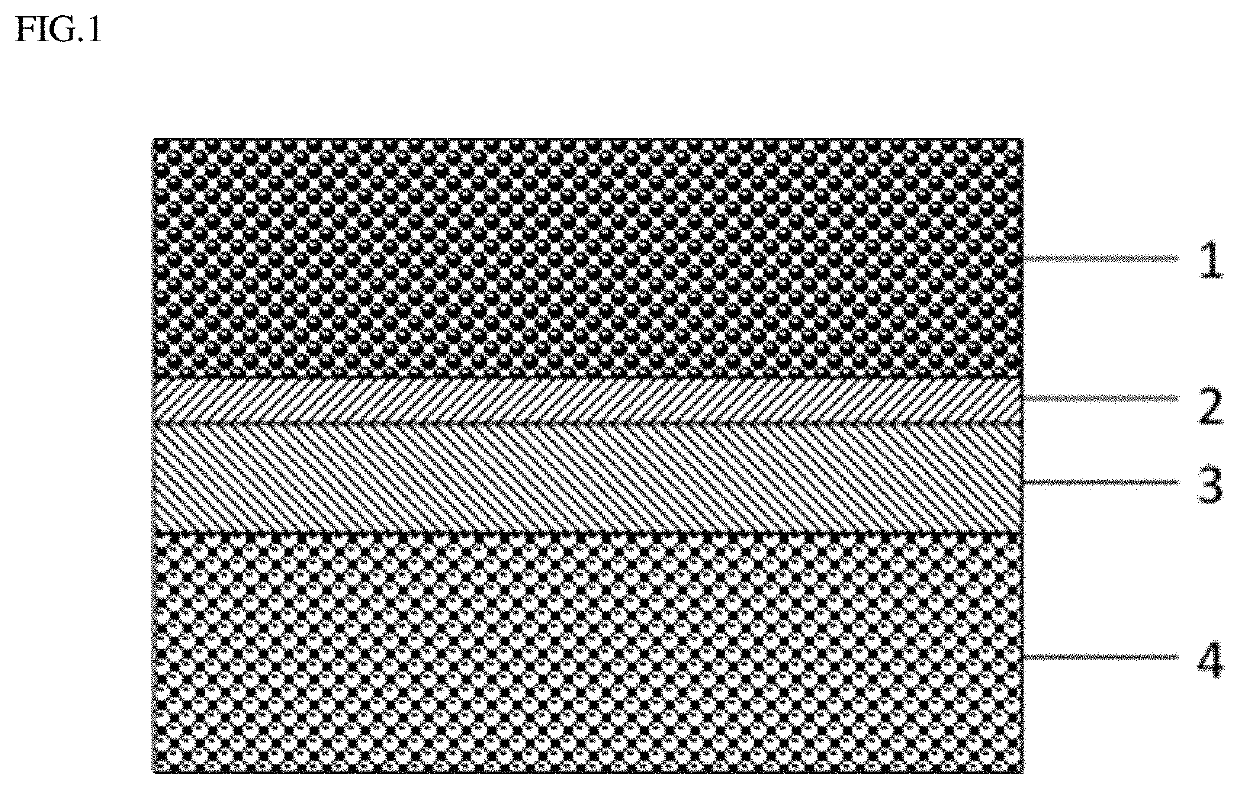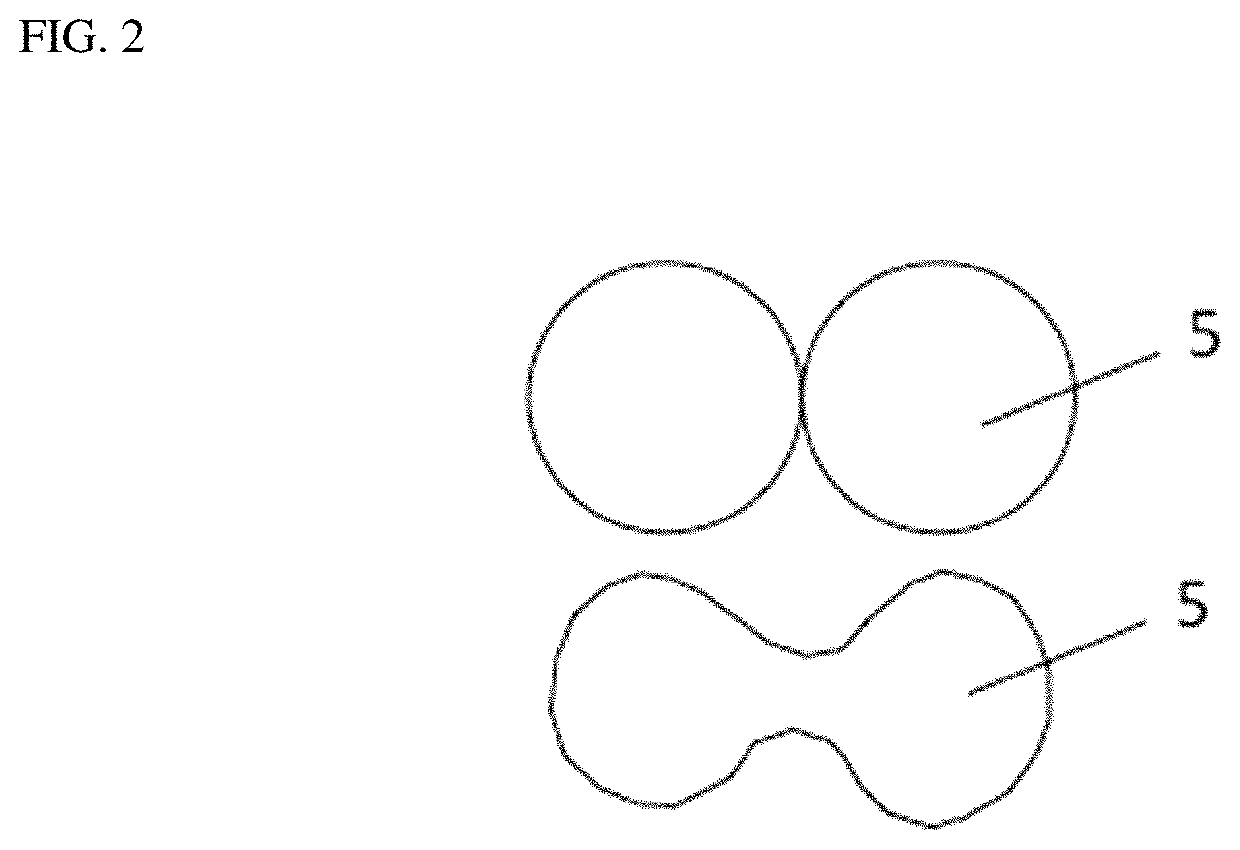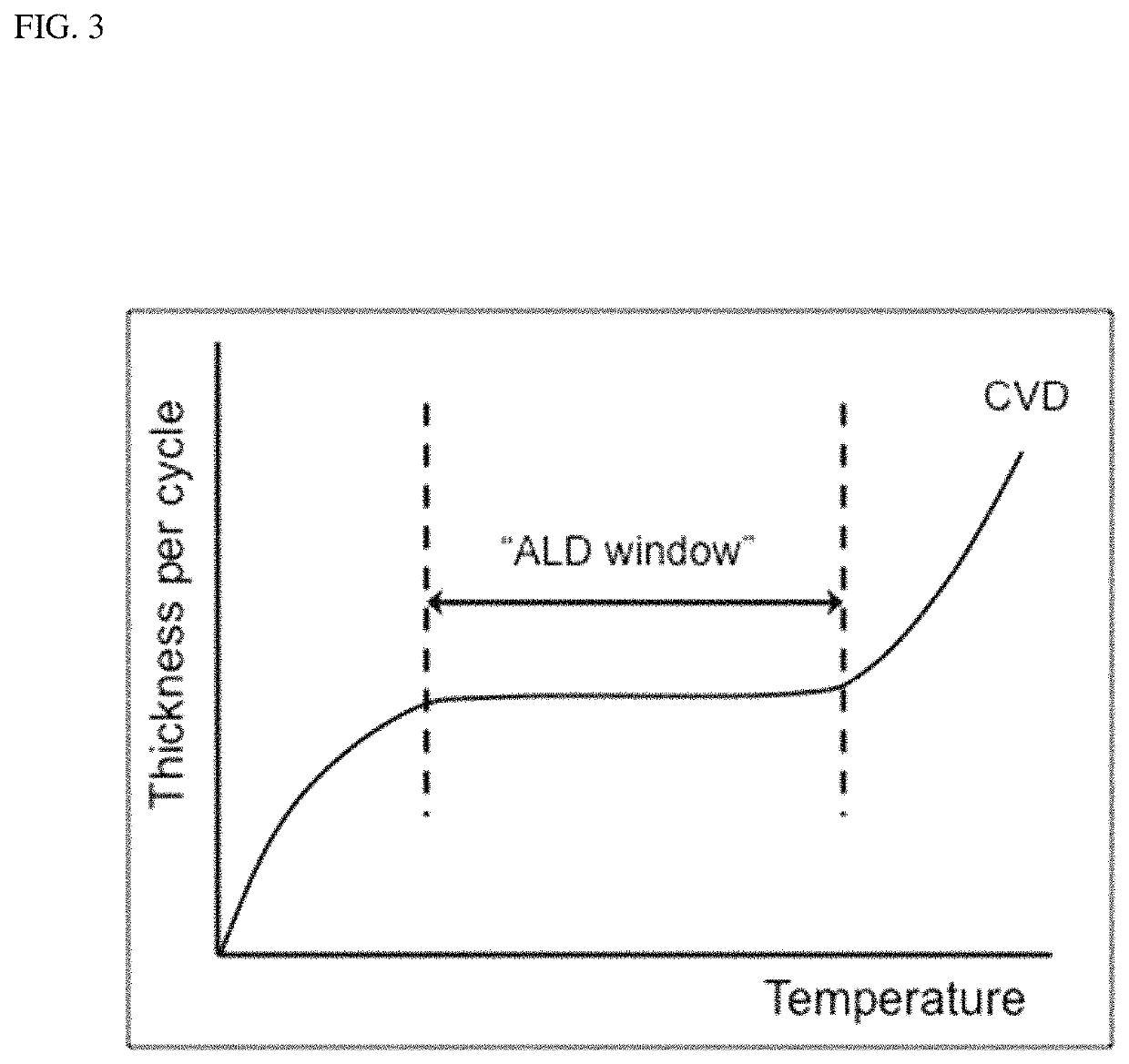Dual conductor surface modified SOFC cathode particles and methods of making same
a technology of surface modified and cathode particles, which is applied in the direction of cell components, electrochemical generators, coatings, etc., can solve the problems of limiting the operating life of sofc, and achieve the effects of improving performance and stability of fabricated lscf cathodes, significantly enhancing performance, and streamlining the manufacturing process
- Summary
- Abstract
- Description
- Claims
- Application Information
AI Technical Summary
Benefits of technology
Problems solved by technology
Method used
Image
Examples
example 1
[0036]A cobalt doped zirconia (CDZ) film is deposited on LSCF held as a loosely packed bed in a porous cup using tetrakisdimethylamido zirconium (TDMAZ) and bis(N,N′-di-i-propylacetamidinato) Co at 240° C. Reactor pressure is 1 Torr. Dose times for TDEAZ, bis(N,N′-di-i-propylacetamidinato) Co and water vapor are 60 seconds. Purge times are 120 seconds. Nitrogen is used to transport the precursors to the deposition chamber and as the inert purge. 60 ALD cycles are used to deposit the film, with a ratio of 6 Zr cycles to 1 Co cycle.
example 2
[0037]A cobalt doped zirconia (CDZ) film is deposited on LSM held as a loosely packed bed in a porous cup using tetrakisdimethylamido zirconium (TDMAZ) and bis(N,N′-di-i-propylacetamidinato) Co at 240° C. Reactor pressure is 1 Torr. Dose times for TDMAZ, bis(N,N′-di-i-propylacetamidinato) Co and water vapor are 60 seconds. Purge times are 120 seconds. Nitrogen is used to transport the precursors to the deposition chamber and as the inert purge. 60 ALD cycles are used to deposit the film, with a ratio of 6 Zr cycles to 1 Co cycle. The resulting particles exhibit a uniform coating of CDZ.
example 3
[0038]A cobalt doped zirconia (CDZ) film is deposited on LSCF contained in a rotating porous vessel at 160 rpm using tetrakisdimethylamido zirconium (TDMAZ) and bis(N,N′-di-i-propylacetamidinato) Co at 240° C. Nominal reactor pressure is 1 Torr. Dose times for TDMAZ, bis(N,N′-di-i-propylacetamidinato) Co and are 27 seconds, repeated 10 times as sub-doses for a single ALD cycle. Pressure is decreased below base pressure after each sub-dose and then a pressure pulse is momentarily introduced to approximately 55 Torr for 0.2 seconds, which occurs prior to a subsequent sub-dose. Water dose time is 70 seconds. Purge times are 720 seconds. Nitrogen is used to transport the precursors to the deposition chamber and as the inert purge. 12 ALD cycles are used to deposit the film, with a ratio of 6 Zr cycles to 1 Co cycle. The resulting particles exhibit a uniform coating of CDZ (FIG. 7).
PUM
| Property | Measurement | Unit |
|---|---|---|
| temperature | aaaaa | aaaaa |
| temperature | aaaaa | aaaaa |
| pressures | aaaaa | aaaaa |
Abstract
Description
Claims
Application Information
 Login to View More
Login to View More - R&D
- Intellectual Property
- Life Sciences
- Materials
- Tech Scout
- Unparalleled Data Quality
- Higher Quality Content
- 60% Fewer Hallucinations
Browse by: Latest US Patents, China's latest patents, Technical Efficacy Thesaurus, Application Domain, Technology Topic, Popular Technical Reports.
© 2025 PatSnap. All rights reserved.Legal|Privacy policy|Modern Slavery Act Transparency Statement|Sitemap|About US| Contact US: help@patsnap.com



